site search
online catalog
HISTORIC INSCRIBED SWORD OF COL. WASHINGTON PINCKNEY SHOOTER, 1st SOUTH CAROLINA, KILLED IN ACTION AT SPOTTSYLVANIA: “I KNOW THAT I AM A DEAD MAN.”

Hover to zoom

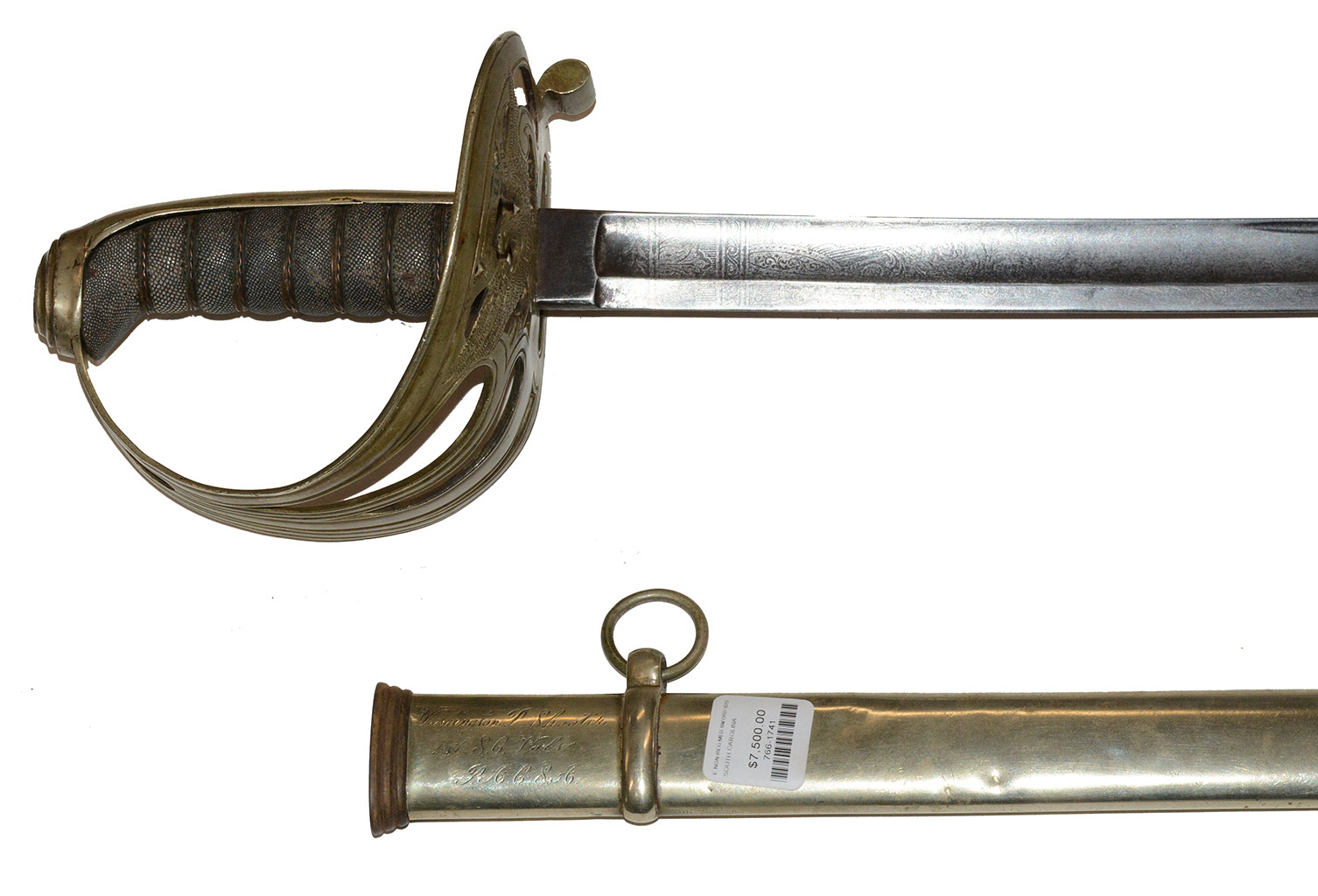
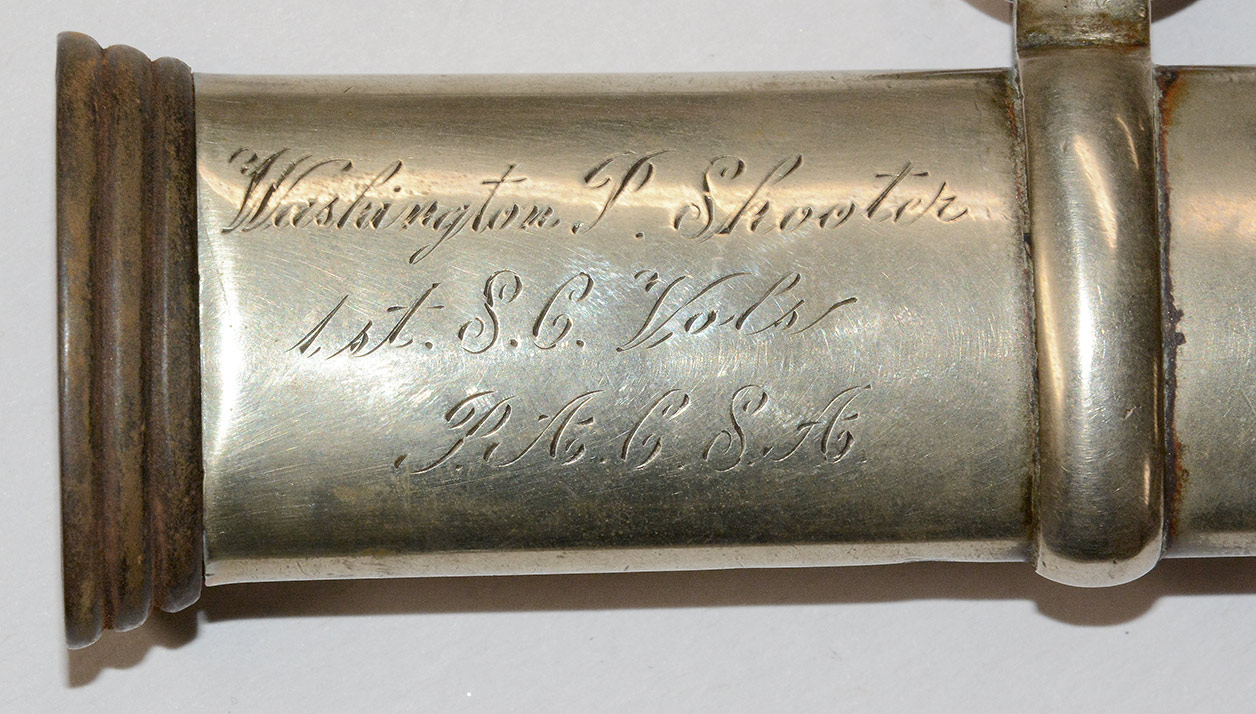

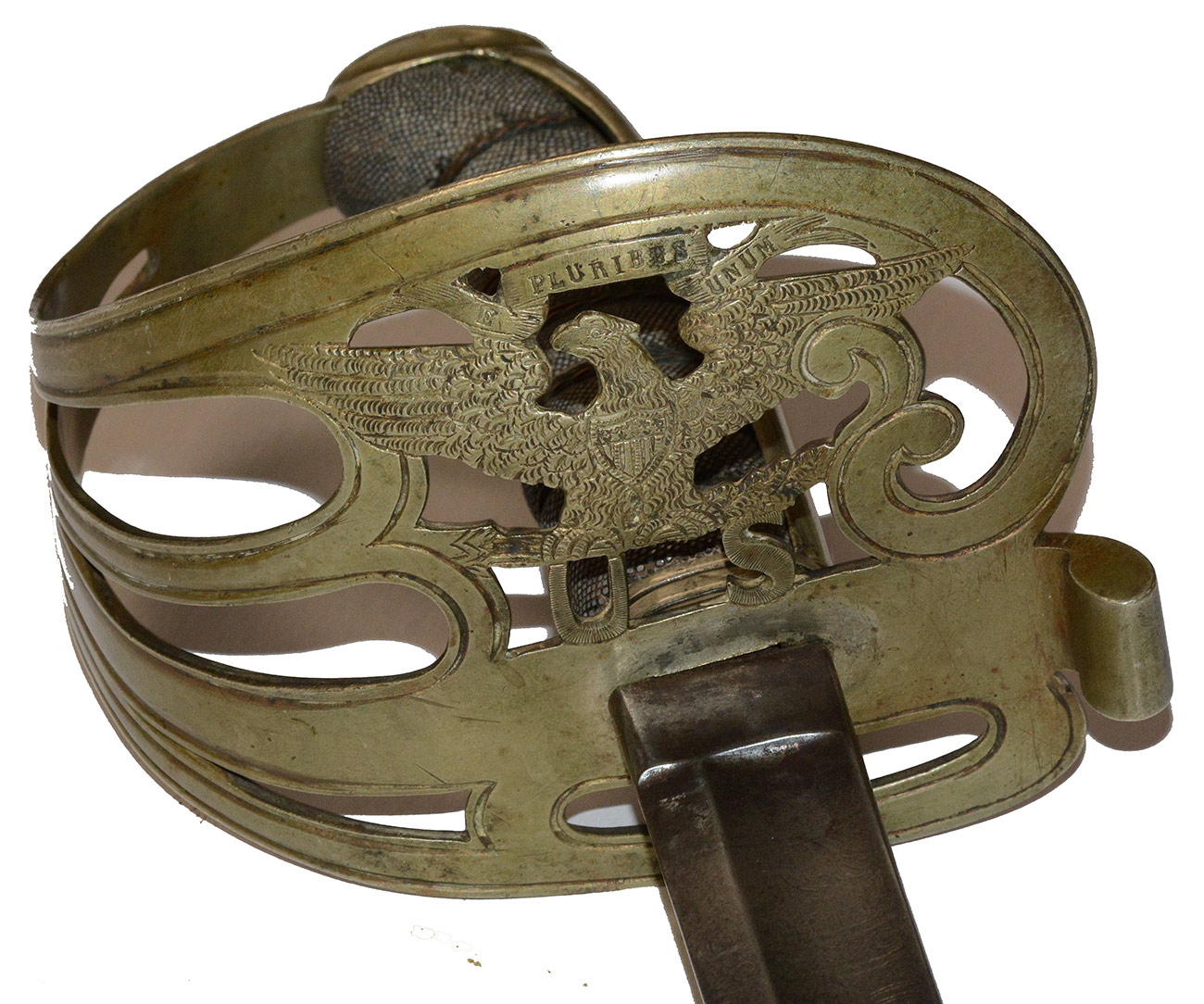
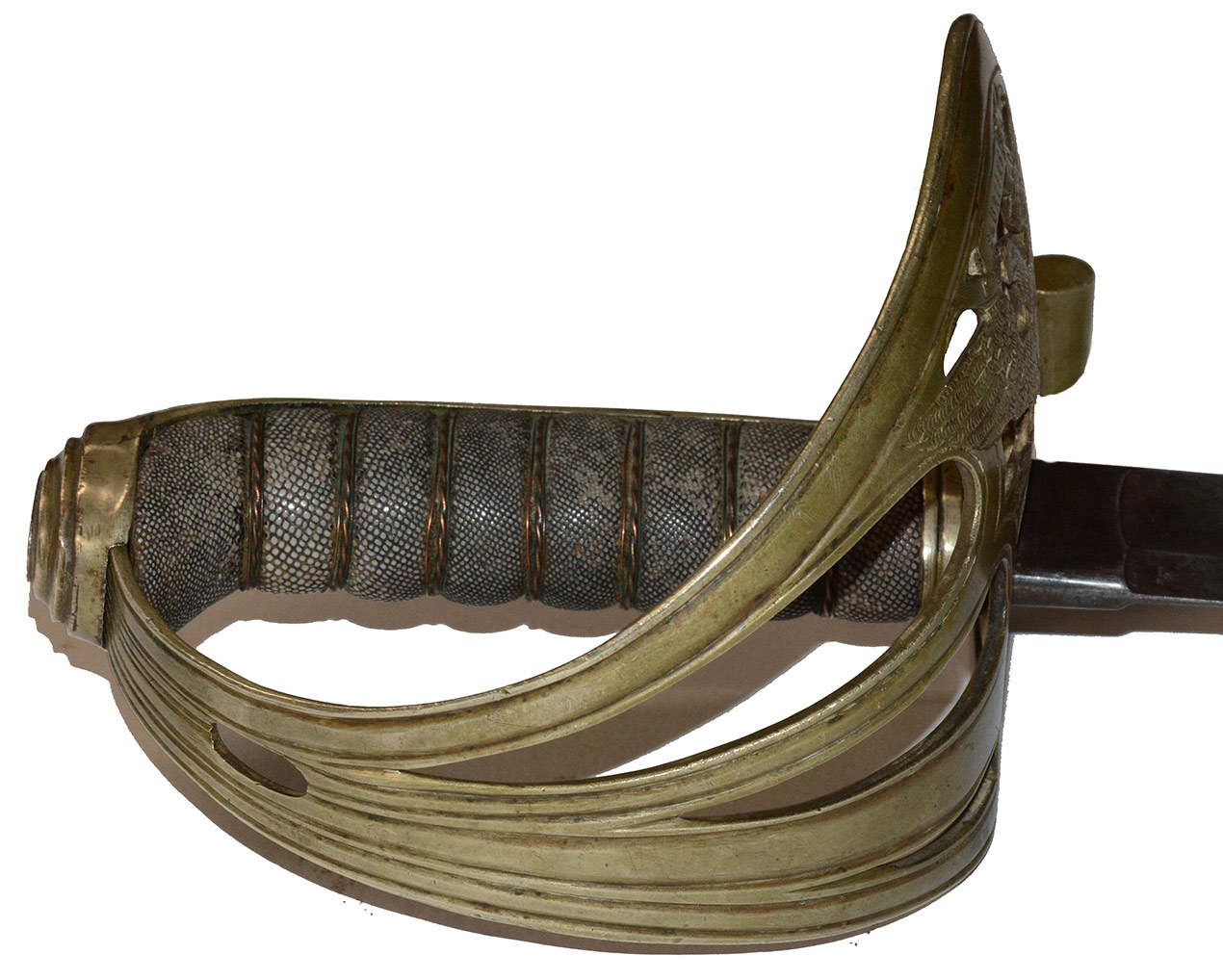
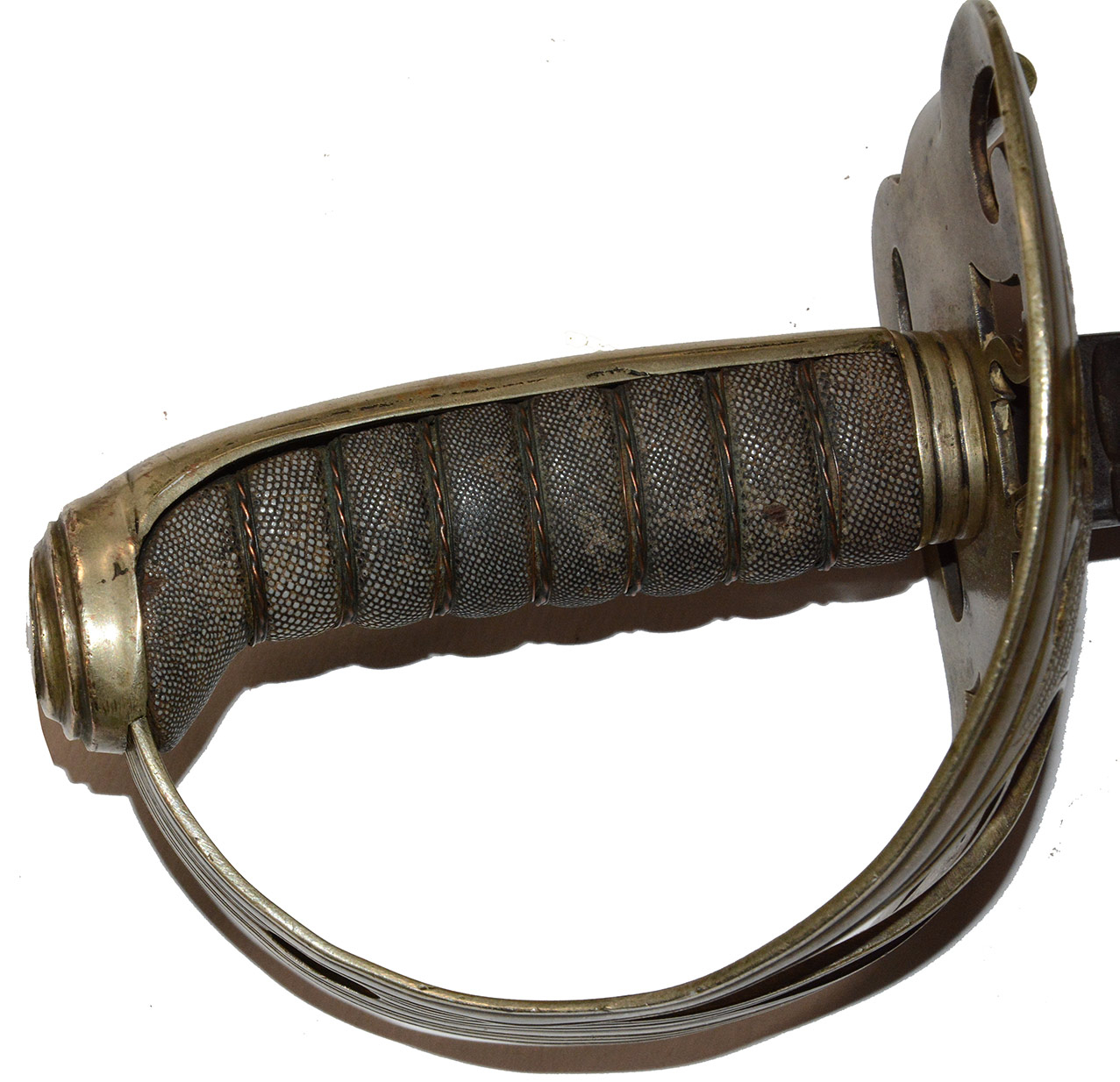
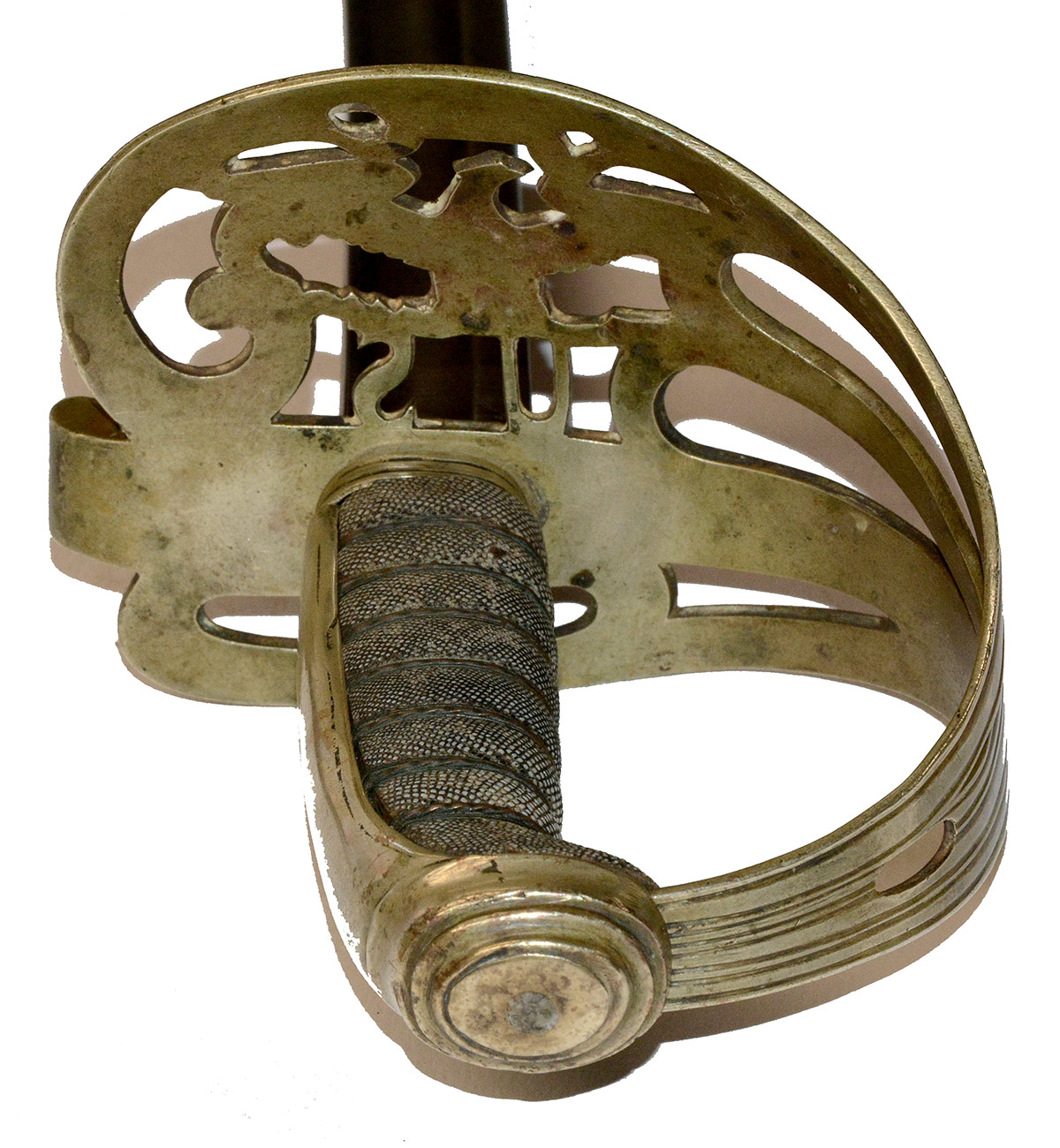
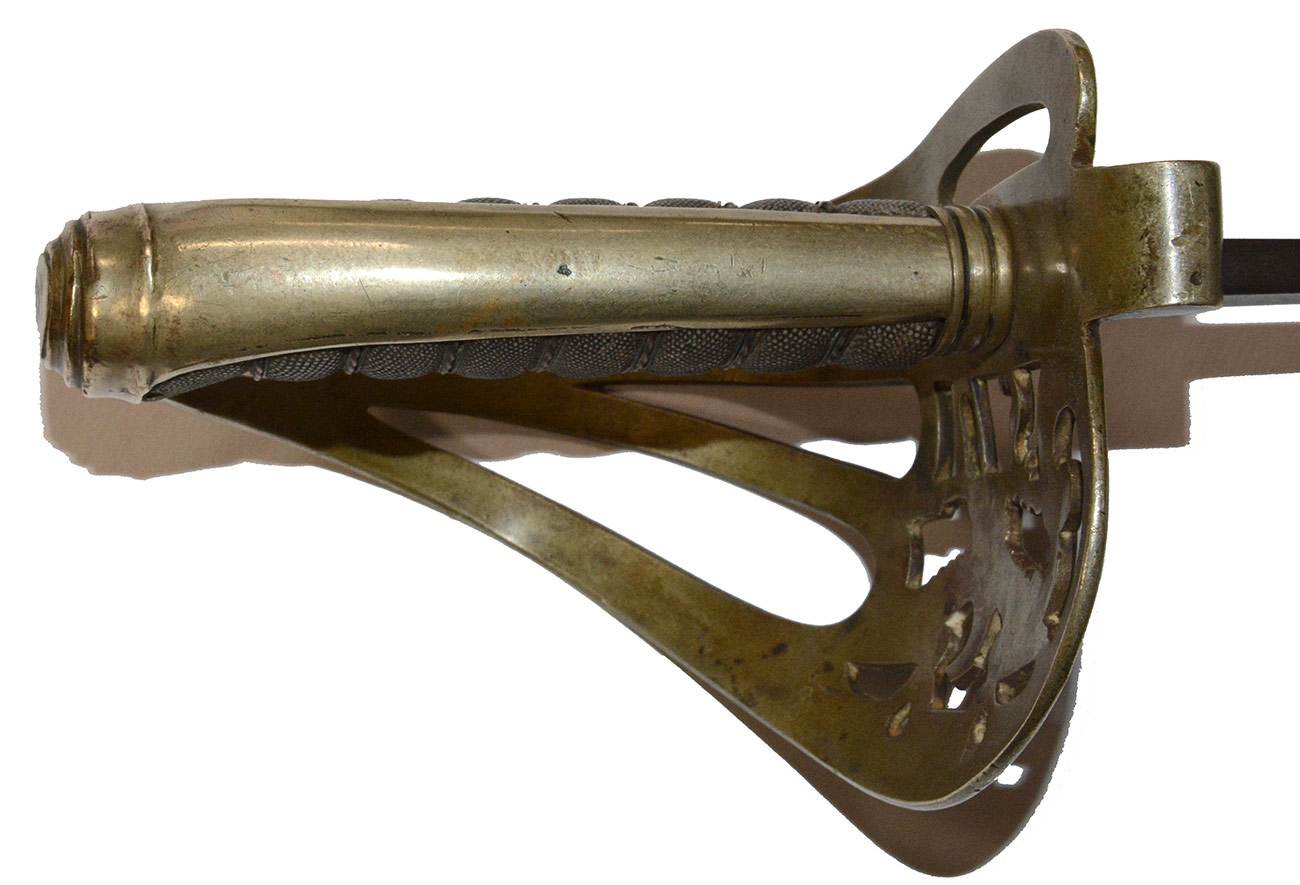



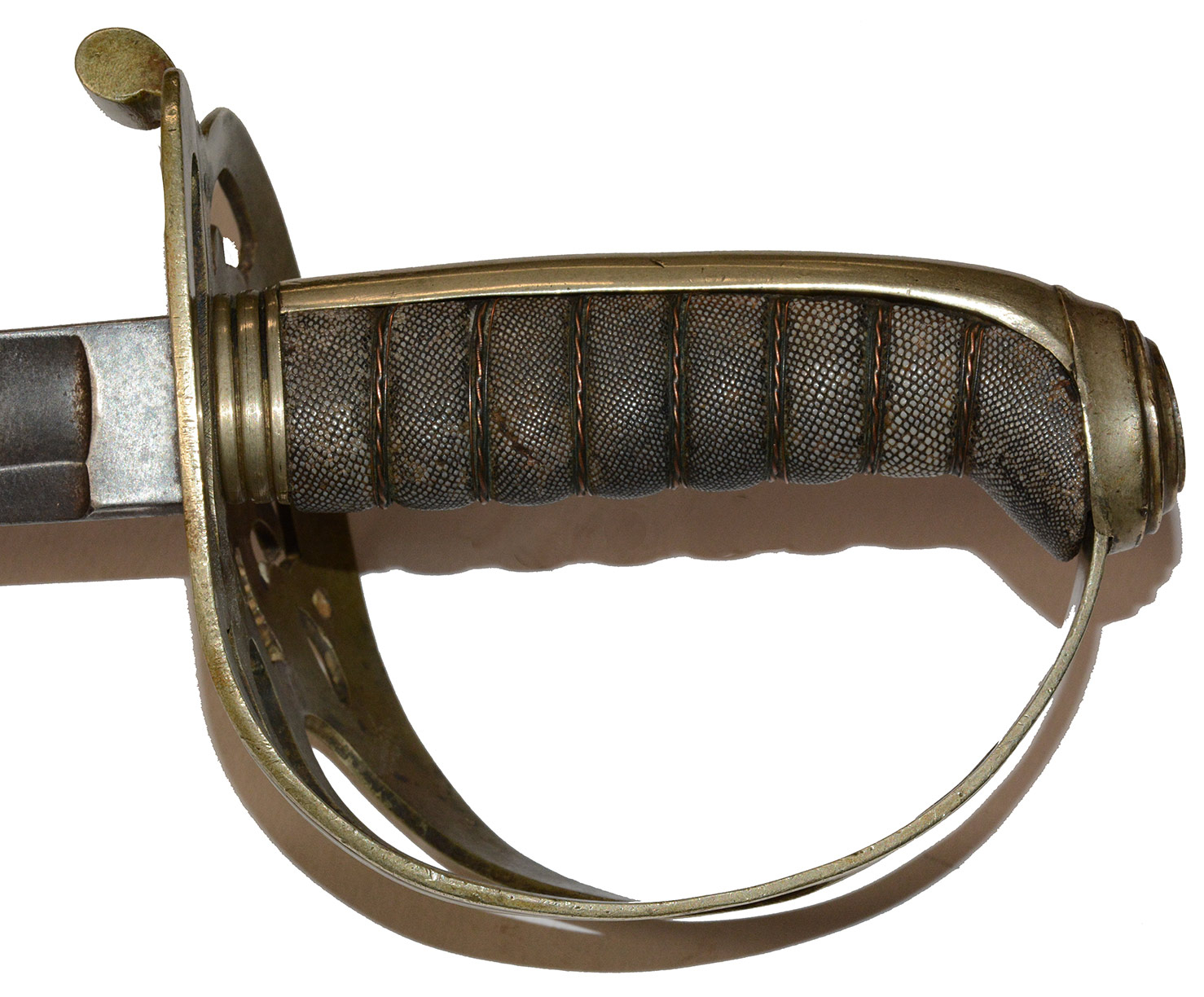








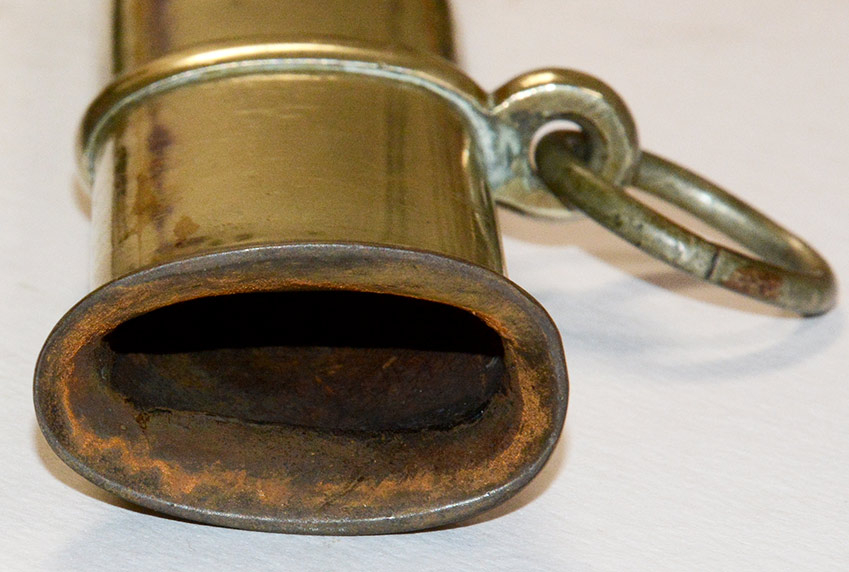

$7,500.00 SOLD
Quantity Available: None
Item Code: 766-1741
This historic sword has a German silver hilt and a silver scabbard making it fully appropriate for an officer in the prewar South Carolina militia, who favored silver for insignia, uniform trim, belt plates, etc. The sword still retains its US eagle in the guard and signs of it on the blade, appropriate for a European import for an officer active for at least six months before the state’s secession in December 1860. The scabbard bears a wonderful script inscription dating to the point at which he led his company into Confederate service in April 1861: Washington P. Shooter / 1st S.C. Vols / P.A.C.S.A.
The “Provisional Army” was the official designation of volunteer forces raised by the states for wartime service to the Confederacy and intended to distinguish them from the “regular army” of the Confederate States. William Pinckney Shooter (sometimes “Pickney,”) an attorney and newspaper editor, was likely attuned more than most to the distinction. Born in Marion County, SC, in 1837, Shooter graduated from the South Carolina Military Academy (The Citadel) in the class of 1858, took up law and became an editor of the Marion “Star.” His feelings about a conflict with the north may be gleaned from his signature in January 1860 to a resolve not to purchase any northern-made article imported to the state, which also makes sense of his carrying a European-made import sword rather than one made in the north. That he was ready for a fight can be assumed from his part in the formation of a new militia company, a “Volunteer Rifle Corps,” at Marion Court House in May 1860 calling themselves the “Marion Light Infantry,” of which he was Second Lieutenant under Capt. R.F. Graham. By January 1861 he had advanced to First Lieutenant in a company commanded by Capt. M.B. Stanley, likely having many of the same men, but renamed the “Marion Volunteers,” who were in Charleston by January 7 in Maxcy Gregg’s regiment as Company K.
Gregg’s command was designated the First Regiment of Infantry, but the designation of the regiment as “Volunteers” as well as the “PACSA,” dates the inscription, though not necessarily the sword, slightly after Sumter. As part of the state forces surrounding Fort Sumter the regiment was posted on Morris Island during the bombardment in April and, with hostilities opened, they joined the Provisional Army of the Confederate States, signing up for six months service about April 22. Designation of the regiment as “volunteers,” and Shooter’s membership in it under that name, can be dated as early as May 8, 1861, when a Charleston newspaper refers to him as, “1st Lieutenant First Regiment Infantry, South Carolina six months Volunteers in Charleston.”
The omission of a rank in the inscription also points to the same period. By May 24 the regiment had been posted to Manassas Junction as part of Bonham’s Brigade, but a South Carolina newspaper overtly states that the company had been led in Virginia not by Stanley, but by Shooter. In that light, omission of a rank points to a date just before their departure for Virginia, when Shooter is in line for a promotion, but not yet officially advanced in rank or confirmed. His promotion to Captain likely occurred shortly after, though for a while may have been moot since the regiment was mustered out in Richmond on July 9 in preparation for reorganization for a longer term of service, which happened in August, when Shooter was officially elected Captain of a new company, again likely containing many of the same men, but now titled the “Marion Rifles” and redesignated Company E of the First South Carolina Volunteers, still under Maxcy Gregg, with Shooter enlisting “for the war.”
Shooter is listed as present on all muster rolls in his service file with the exception of a leave granted on March 24, 1863, though a secondary source says he missed the Battle of Antietam for some reason. His March 1863 leave does not seem to have been long and occurred after he had been in temporary command of the regiment in January and February. He is referred to many times in official reports and histories of South Carolina troops. A brief summary does not do him justice. The regiment was heavily engaged in major actions of the Army of Northern Virginia. They lost 20 killed and 133 wounded during the Seven Days Battles before Richmond, including Gaines Mill and Frayser’s Farm; at Second Manassas they lost some 53% of the 233 men engaged; they were at Chantilly and South Mountain, and joined the fighting at Antietam in time to help repulse Burnside’s belated advance. They lost another 73 men at Fredericksburg and at Chancellorsville, 104. At Gettysburg the lost 34% of 328 men on the field, mostly in the fighting of July 1, with heavy skirmishing the following two days as part of Perrin’s brigade, which lost 577 in killed and wounded out of some 1,600 present. They were at Falling Waters in the retreat, and closed out the year with service in the Bristoe and Mine Run Campaigns.
By January 1864 both the Colonel and Lt. Colonel of the regiment had resigned, resulting in the promotion of the regiment’s Major to Colonel and a consequent jump of two grades by Shooter as senior Captain to Lieutenant Colonel. The appointment was made March 11, accepted by Shooter April 2, and confirmed on May 18, officially giving him rank as of January 4, the date of the Lieutenant Colonel’s resignation, and the point at which he would have been performing his new duties. The date of Shooter’s confirmation was ironic: he had been killed six days earlier.
The regiment had been actively engaged against Grant’s offensive since May 5-6, losing 137 in killed, wounded and missing at the Wilderness. On May 12, as part of McGowan’s brigade, they were sent into the slaughterpen of the Salient as Confederates struggled to reestablish a line overrun by Hancock’s massive assault that bogged down into close-quarters fighting in mud and rain as both sides pushed in reinforcements. One of Shooter’s brothers had been killed at the Wilderness. Another, Evander, also in the First, died nearby in this fighting. One source reported Shooter encouraged his men after being hit, “Forward, men. I die with my eyes fixed on victory.” Another adds the detail that he had first told those coming to his aid, “I know that I am a dead man.”
A letter from a member of the regiment published in the Charleston Courier two weeks later differs in saying he was killed instantly, and offers a graphic picture of the fighting as McGowan’s brigade struggled to retake and hold the line until a new one could be established to the rear: “From 9 A.M. until 7 A.M. of the next day we held the first line, the Yankees being behind entrenchments within thirty yards from us. It rained constantly and often copiously, and we were laid in mud knee deep, and as soft as molasses, rising and firing as we could load. The ground in front was carpeted with Yankee dead and our trenches filled with our own dead- very few wounded. I was splashed over with brains and blood. In stooping down or squatting to load, the mud, blood and brains mingled, would reach up to my waist, and my head and face were covered or spotted with the horrid paint….” According to the newspaper, “The writer reports that with a comrade he took in keeping the watch, pocket book and other personal effects of Lieut. Col. Shooter on his falling instantly killed.” Shooter is buried in the Confederate cemetery at Spottsylvania.
The sword is a “Peterson-75,” following the plate designation in the classic “American Sword.” Modelled on the British 1827/45 pattern for officers of riflemen, these were valued for field use because of their metal scabbards and were imported into the north and south in large numbers: see comments in the “English Connection.” The blade has a good edge and point, but is dark and shows no visible maker or retailer’s mark, though some of the floral etching is visible along with a faint U.S. The hilt is German (nickel) silver, one of several variations known for the pattern: see Thillmann, “Civil War Army Swords.” The grip is sharkskin wrapped and wire bound. Both are in good condition with the wrap showing a couple of small wear spots and one small hole showing the wood, but good color, and the central twisted wire of the binding in place and tight with the border wire a little loose in spots or displaced. The guard has the motto stamped in the ribbon banner over the eagle, which is commonly done, but the eagle itself shows nice enhancement in detailing the feathers, the shield on the eagle’s chest, and adding serrations along the edges of the U.S. It must have been a constant reminder to Shooter of the issues and stakes of the struggle.
This is an historic sword, carried by officer active even in the lead-up to war and one who paid the ultimate price. [sr] [ph:L]
~~~~~~~~~~~~~~~~~~~~~~~~~~~~~~~~~~~
THIS ITEM, AS WITH ALL OTHER ITEMS AVAILABLE ON OUR WEB SITE,
MAY BE PURCHASED THROUGH OUR LAYAWAY PROGRAM.
CLICK HERE FOR OUR POLICIES AND TERMS.
THANK YOU!
Inquire About HISTORIC INSCRIBED SWORD OF COL. WASHINGTON PINCKNEY SHOOTER, 1st SOUTH CAROLINA, KILLED IN ACTION AT SPOTTSYLVANIA: “I KNOW THAT I AM A DEAD MAN.”
Most Popular
Historical Firearms Stolen From The National Civil War Museum In Harrisburg, Pa »
Theft From Gravesite Of Gen. John Reynolds »
Selection Of Unframed Prints By Don Troiani »
Fine Condition Brass Infantry Bugle Insignia »
Large English Bowie Knife With Sheath 1870’S – 1880’S »
Imported (Clauberg) Us Model 1860 Light Cavalry Officer's Saber »
featured item
MODEL 1851 SWORD BELT PLATE FROM HARPERS FERRY ON A GREAT DISPLAY CARD
This sword belt plate, a very good example of an early pick-up, is mounted on a great old card typical of early relic displays labeled in brown ink, “Officers Belt Plate / battlefield of Harpers Ferry / West Virginia.” The plate has an untouched,… (1202-196). Learn More »


